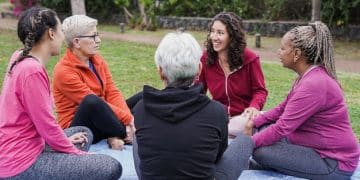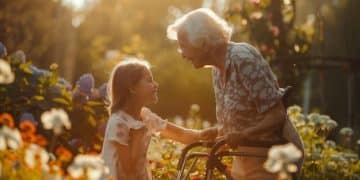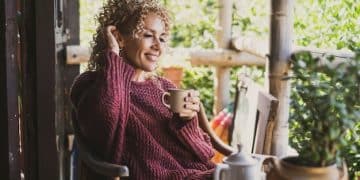Preventing Falls in the Elderly: Practical Tips for a Safer Home

Preventing falls in the elderly involves practical tips and home modifications to create a safer environment, reducing the risk of injuries and promoting independence.
Falls are a significant concern for older adults, often leading to injuries, reduced mobility, and a decline in overall quality of life. Preventing falls in the elderly through practical tips and home modifications is crucial for maintaining their independence and well-being.
Understanding the Risks of Falls in the Elderly
Falls are not an inevitable part of aging. Many factors can contribute to an increased risk of falling, and understanding these risks is the first step in prevention. Addressing these factors can significantly reduce the likelihood of falls and improve the safety and quality of life for older adults.
Common Risk Factors for Falls
Several factors can increase the risk of falls among the elderly. Identifying these risks is crucial for implementing effective prevention strategies.
- Vision Impairment: Poor eyesight can make it difficult to navigate surroundings safely.
- Medications: Certain medications can cause dizziness or drowsiness, increasing the risk of falls.
- Chronic Conditions: Conditions like arthritis, Parkinson’s disease, and neuropathy can affect balance and coordination.
- Environmental Hazards: Clutter, poor lighting, and slippery surfaces can contribute to falls.
Recognizing these risk factors allows caregivers and family members to take proactive steps to mitigate them. Addressing these issues through medical interventions, home modifications, and lifestyle changes can significantly reduce the likelihood of falls.
Medical Evaluations and Fall Prevention
A comprehensive medical evaluation is an essential component of preventing falls in the elderly. Consulting with healthcare professionals can identify underlying health issues and provide tailored recommendations to minimize fall risks.
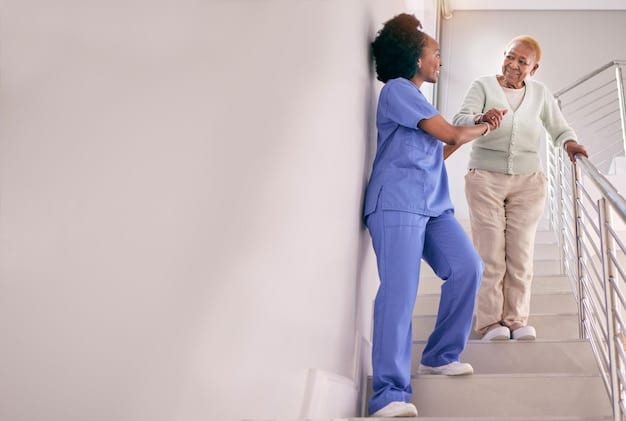
Importance of Regular Health Check-ups
Regular health check-ups can help identify and manage conditions that increase fall risk. Healthcare providers can assess vision, hearing, balance, and strength, making recommendations for improvement.
- Vision and Hearing Tests: Addressing vision and hearing impairments can improve spatial awareness and reduce the risk of falls.
- Medication Review: A pharmacist or physician can review medications for potential side effects that increase fall risk.
- Balance and Gait Assessment: Physical therapists can assess balance and gait, providing exercises and strategies to improve stability.
Engaging with healthcare professionals proactively is key to identifying and managing potential risk factors. Regular evaluations and follow-up care can make a significant difference in reducing the likelihood of falls.
Home Safety Assessments: Identifying Hazards
A thorough home safety assessment is crucial for identifying and addressing potential hazards that could lead to falls. This involves carefully examining the living environment to pinpoint areas that need modification or improvement. The goal is to create a safer, more accessible space for older adults to navigate independently.
Conducting a Room-by-Room Assessment
Go through each room in the house to identify potential hazards. Here are some key areas to focus on:
Bathrooms: Install grab bars in the shower and near the toilet, use non-slip mats, and consider a raised toilet seat.
- Kitchens: Ensure frequently used items are within easy reach, clear clutter from countertops, and use non-slip flooring.
- Bedrooms: Place a nightlight near the bed, ensure the bed height is appropriate, and remove any tripping hazards.
- Living Areas: Secure rugs, arrange furniture to allow for clear pathways, and ensure adequate lighting.
Addressing these hazards proactively can transform a home into a safer, more supportive environment for older adults. Regular assessments and modifications are essential for maintaining a fall-free living space.
Practical Home Modifications for Fall Prevention
Making strategic home modifications is a key step in preventing falls in the elderly. These changes can significantly reduce the risk of falls by addressing common hazards and improving accessibility. Well-chosen modifications can enhance the safety and independence of older adults in their homes.
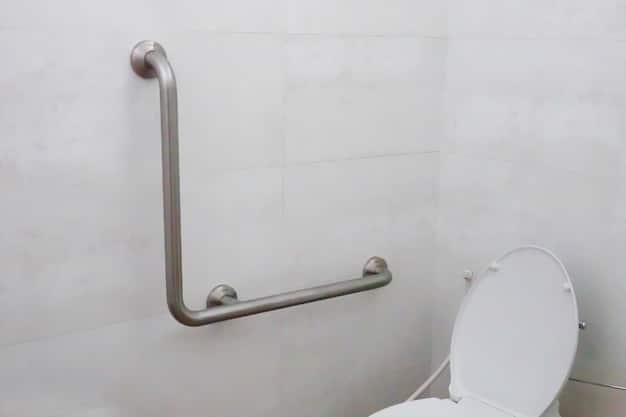
Simple and Effective Home Modifications
Numerous modifications can be made to enhance home safety. Some of the most effective include:
- Installing Grab Bars: Place grab bars in bathrooms to provide support when using the toilet or shower.
- Adding Non-Slip Mats: Use non-slip mats in bathrooms, kitchens, and entryways to prevent slips and falls.
- Improving Lighting: Ensure adequate lighting throughout the home, especially in hallways and staircases.
These modifications, while simple, can have a significant impact on reducing fall risks. They provide added stability, improve visibility, and create a more secure environment for older adults.
The Role of Assistive Devices in Fall Prevention
Assistive devices play a vital role in preventing falls in the elderly by providing support, stability, and increased mobility. These devices can help older adults navigate their environments more confidently and safely. Selecting the right assistive devices and ensuring they are used correctly is essential for maximizing their benefits.
Types of Assistive Devices
Various assistive devices can aid in fall prevention. Some of the most common include:
Walking Canes: Provide additional stability and support for those with balance issues.
- Walkers: Offer greater support and stability than canes, especially for individuals with significant mobility challenges.
- Grab Rails: Installed in bathrooms, they provide support for sitting and standing.
Consulting with healthcare professionals is crucial for determining the most appropriate assistive devices based on individual needs and abilities. Proper training and regular maintenance are also essential to ensure these devices are used effectively and safely.
Lifestyle Changes and Exercise for Fall Prevention
Lifestyle changes and regular exercise are crucial components of a comprehensive fall prevention strategy. Engaging in activities that improve strength, balance, and coordination can significantly reduce the risk of falls. These changes promote overall physical fitness and enhance the ability to navigate daily activities safely.
Exercises to Improve Balance and Strength
Specific exercises can help improve balance and strength, reducing the likelihood of falls.
- Tai Chi: This gentle exercise improves balance, coordination, and flexibility.
- Strength Training: Exercises like leg raises, squats, and arm curls can strengthen muscles and improve stability.
- Balance Exercises: Standing on one leg, heel-to-toe walking, and other balance exercises can enhance stability.
Incorporating these exercises into a daily routine can lead to significant improvements in balance, strength, and overall physical well-being. Consulting with a physical therapist can help develop a personalized exercise program tailored to individual needs and abilities.
| Key Point | Brief Description |
|---|---|
| 💪 Strength Training | Improves muscle strength for better balance and stability. |
| 🏡 Home Modifications | Installing grab bars and non-slip mats reduces fall hazards. |
| 🩺 Health Check-ups | Regular medical assessments identify and manage fall risks. |
| 🧘 Tai Chi | Enhances balance, coordination, and flexibility to prevent falls. |
FAQ
▼
Common risk factors include vision impairment, medication side effects, chronic conditions such as arthritis, and environmental hazards like clutter and poor lighting.
▼
A home safety assessment identifies potential hazards that can cause falls, allowing for modifications like installing grab bars or improving lighting to create a safer environment.
▼
Exercises that improve balance and strength, such as Tai Chi, leg raises, and heel-to-toe walking, are highly effective in reducing the risk of falls.
▼
Assistive devices like walking canes, walkers, and grab rails in bathrooms can provide added stability and support, helping to prevent falls.
▼
Elderly individuals should have their vision checked at least once a year, or more frequently if they notice changes in their vision, to ensure optimal spatial awareness.
Conclusion
Preventing falls in the elderly requires a multifaceted approach that includes addressing medical conditions, modifying the home environment, utilizing assistive devices, and promoting lifestyle changes such as regular exercise. By taking proactive steps, caregivers and family members can significantly reduce the risk of falls, improving the safety and quality of life for older adults.
